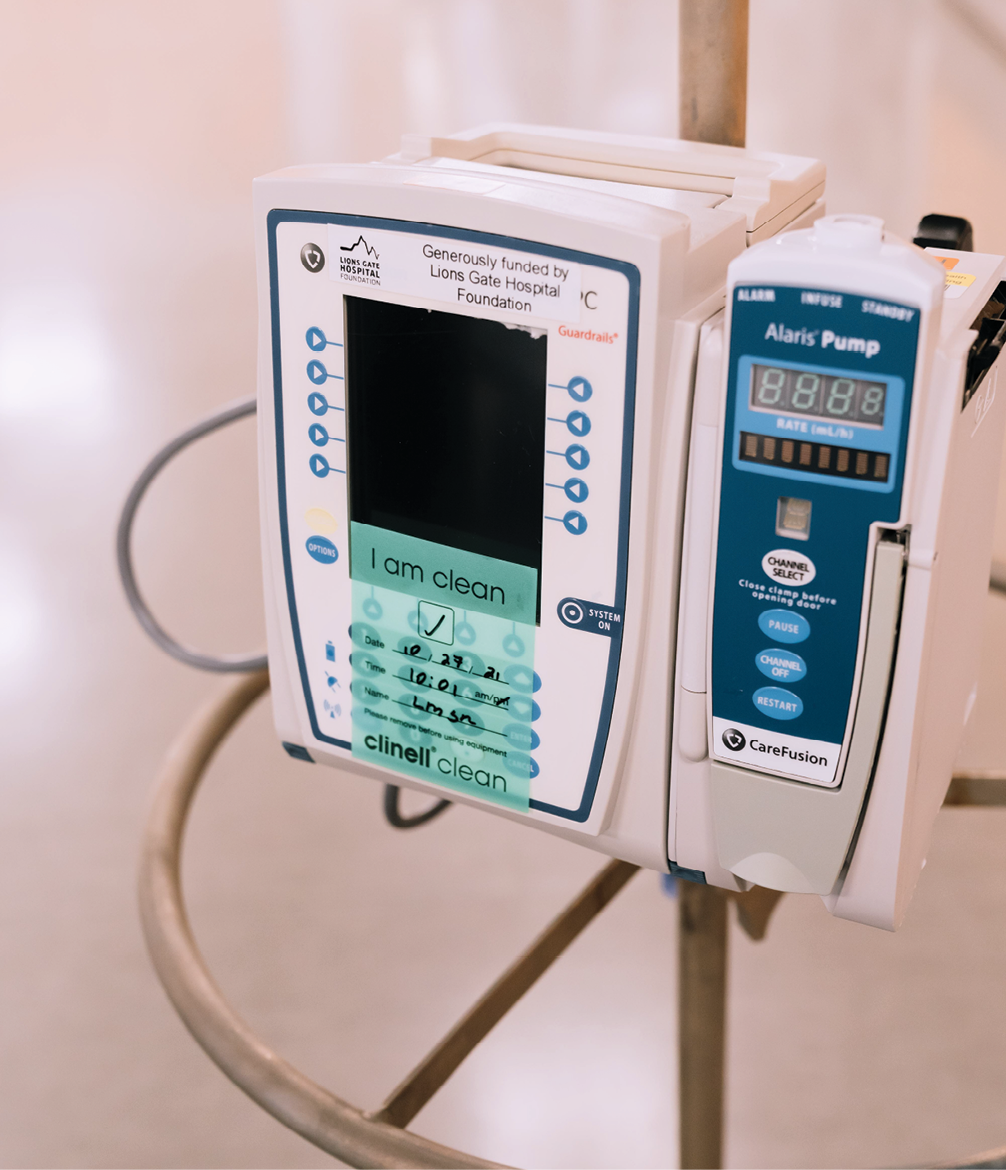Call it a fight against the rise in superbugs: how antimicrobial copper is helping eliminate bacteria on high-touch surfaces in hospitals across British Columbia.
By Jay Schlosar

End uses for copper are growing exponentially. Now, in a fight for the more than 220,000 hospital patients in Canada that will contract healthcare-acquired infections this year comes the growing emergence of antimicrobial copper, which can help to stop the spread.
When you are admitted to a hospital, you’re obviously hoping to get better. In some cases, however, the hospital itself can actually make you sick.
According to the Canadian Institute for Health Information, between January 2020 and March 2021, there were more than 65,615 hospital stays and 158,860 emergency department visits. Every one of those Canadians visiting hospitals during that period were at risk of a superbug-related illness.
For those unfamiliar with the term, a superbug is a strain of bacteria, viruses, parasites, and fungi that are resistant to most antibiotics and medications used to treat the infections they cause. Superbugs spread via surfaces people touch all the time. Think about it: how many people touch things like door handles, elevator buttons, and handrails? In hospitals, these risks grow exponentially.
In research released in the United States by the Centers for Disease Control (CDC), drug-resistant germs make about three million Americans sick every year and account for about 35,000 deaths in the U.S.
What’s significant in this 2022 report is that more than 29,400 people died of antimicrobial-resistant infections commonly associated with healthcare. Of these, nearly 40% acquired the infection while hospitalized.
In Canada, the data on superbugs is included in the reporting of patients who experience healthcare acquired infections (HAI). Every year, more than 220,000 patients will contract an HAI while receiving care. This can result in prolonged hospital stays, some $4 billion in additional annual cost to the healthcare system, and a rise in antibiotic resistance.
Sometimes, there are also more direct and tragic consequences. Each year, between 8,000 and 12,000 patients in Canada will die from an HAI.
The best way to limit the spread of superbugs on high-touch surfaces is measures that enhance antimicrobial resistance. As the Government of Canada report “Antimicrobial Resistance use in Canada” explains, implementing measures that reduce microbial loads are the most effective treatment for infections and diseases. This includes incorporating these measures directly into the built environment of hospitals and other healthcare facilities.
Copper has proven antimicrobial properties, which has been demonstrated to eliminate up to 99.9% of harmful bacteria on surfaces within two hours of contact. When installed on high-touch surfaces – such as those in a hospital – copper is a proven killer of bacteria, reducing the spread of infection and improving health outcomes.
Implementing antimicrobial copper could reduce these infections by as much as 20%. That would save nearly $1 billion for the healthcare system in Canada alone. This is backed by science, approved by the U.S. Environmental Protection Agency and Health Canada.

In 2017, Teck launched its Copper & Health program. Teck has long been a champion of improving healthcare in British Columbia where our head office and many of our operations are located and throughout other regions where we operate. When we saw the issues facing hospitals with HAIs, we knew we could help.
To date, we have installed antimicrobial copper surfaces in four B.C. hospitals: Vancouver General Hospital, Lions Gate Hospital, St. Paul’s Hospital and Kootenay Boundary Regional Hospital. We also installed antimicrobial copper in Iquique Hospital in Chile.
But we are just getting started. Teck also has new partnerships to install antimicrobial copper underway with Royal Inland Hospital’s Emergency Department in Kamloops, the Lion’s Gate Hospital’s Redevelopment project in North Vancouver, and the St. Paul’s Hospital’s redevelopment project to be built at the Jim Pattison Medical Centre in Vancouver.
The purpose of these partnerships is simple: to help reduce the spread of superbugs and HAIs, and keep patients, staff, and visitors healthy. This innovative approach has enabled these hospitals to reduce the spread of superbugs and made hospital stays safer. These partnerships also build awareness of copper’s antimicrobial superpowers to support a global shift toward the use of these surfaces in healthcare – and all other public spaces – to help save lives.
Jay Schlosar is the Director of Copper & Health at Teck Resources and sits on the board of the Coalition for Community and Healthcare Acquired Infection Reduction (CHAIR).
